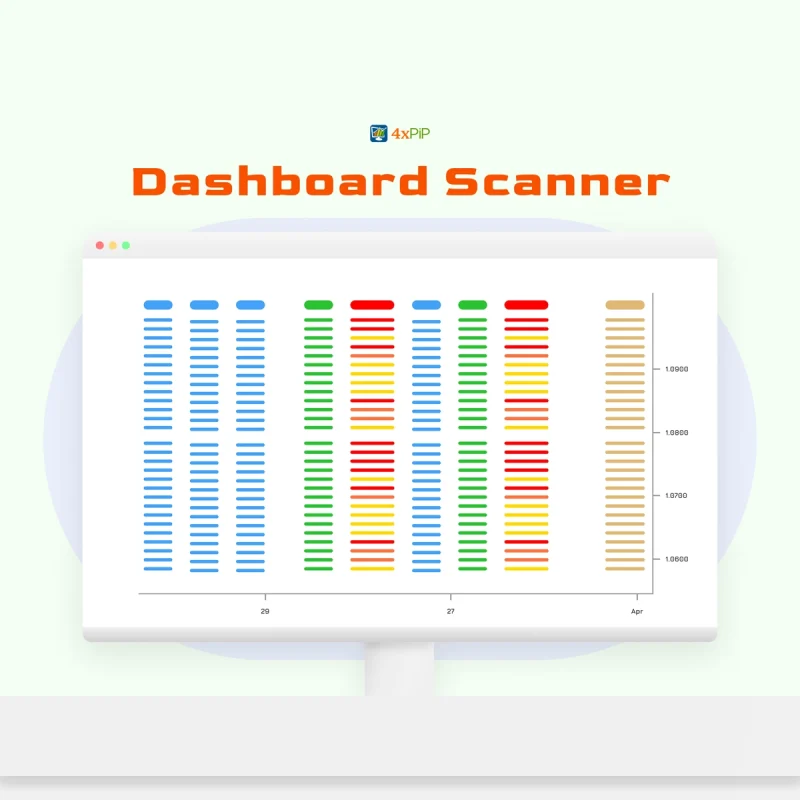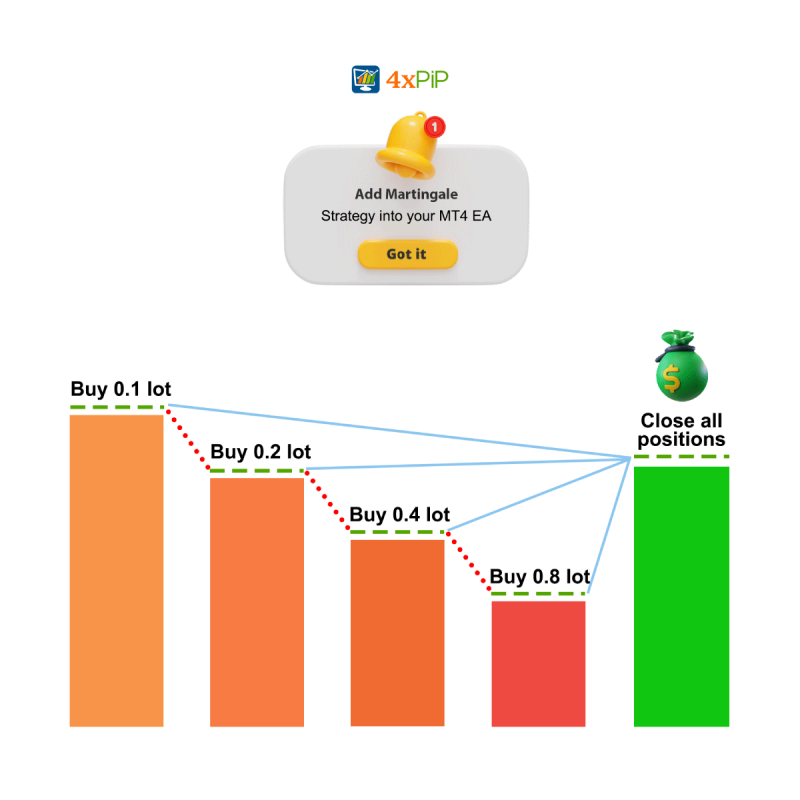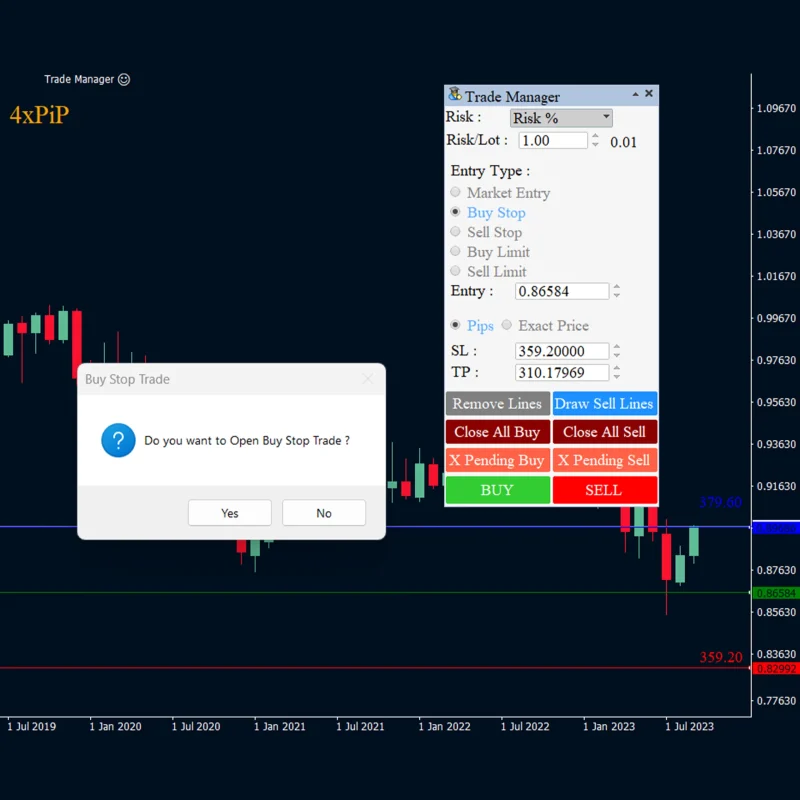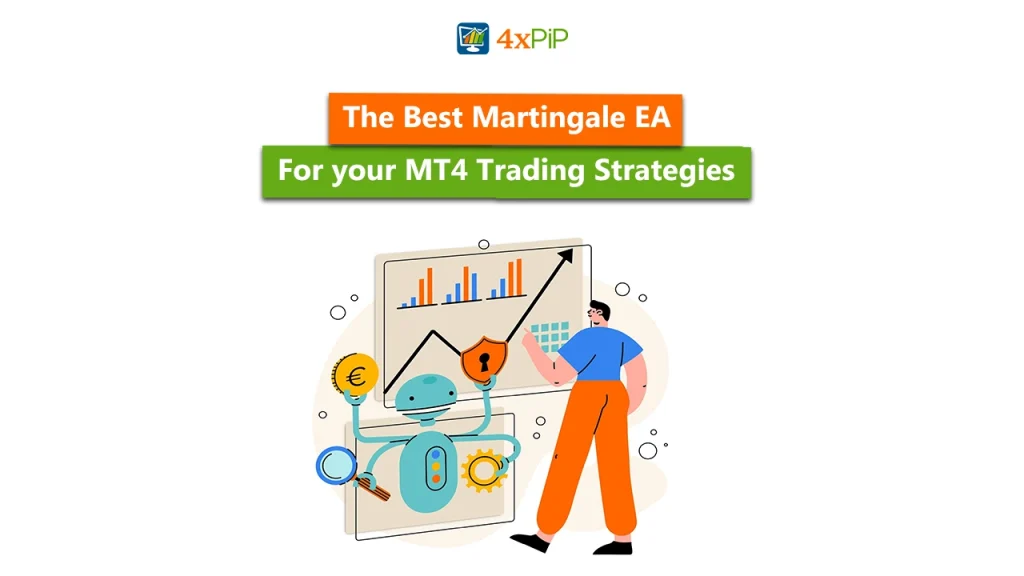Algorithmic trading bots rely on dynamic programming to function efficiently under fluctuating spreads, slippage, and volatility. While theoretical strategies perform smoothly in simulations, real-world execution faces constant interruptions from liquidity changes, execution delays, and variable tick data. To bridge this gap, custom bot developers use adaptive logic, event-based triggers, and risk-adjusted position sizing to ensure the Expert Advisor (EA) makes decisions aligned with live market behavior. Systems developed through 4xPip’s Custom Bot Programming use these principles to achieve precise control under unpredictable trading conditions.
Market Realities That Challenge Automated Strategies

In live market conditions, spread fluctuations, liquidity gaps, and price spikes often disrupt even the most carefully coded trading systems. When liquidity drops, spreads can widen within milliseconds, causing trade entries to slip or orders to fill outside their intended range. Fixed-parameter bots that rely on backtested precision struggle here, they can’t dynamically interpret changing execution costs or fluctuating tick data. This is why a strategy that looks flawless in a historical test can collapse under live volatility, where latency, broker execution speed, and real-time pricing all interact differently.
To build resilience against such inconsistencies, 4xPip develops custom EAs that integrate adaptive rules designed to read and respond to market stress. Instead of static triggers, our programmers embed logic that recalculates spread limits, pauses trading during liquidity voids, or adjusts order size under volatility pressure. This process reflects real market behavior, not theoretical conditions, a point often emphasized in 4xPip reviews, where traders credit dynamic coding as the key to maintaining consistent performance when markets behave unpredictably.
Adaptive Logic – Building Flexibility Into Strategy Architecture
Adaptive logic enables an Expert Advisor (EA) to respond intelligently to changing market behavior. Instead of operating with static thresholds, adaptive systems adjust their parameters, like stop-loss, take-profit, and lot size, based on real-time performance metrics and volatility indicators. This design helps maintain precision across different trading environments, whether the market is trending, consolidating, or reacting to sudden news spikes.
Key aspects of adaptive logic include:
- Dynamic Stop-Loss Adjustment: The EA continuously modifies its stop levels in response to volatility or momentum shifts, ensuring that protective exits are always proportionate to current price behavior.
- Volatility-Based Lot Sizing: Position sizes scale automatically depending on average true range (ATR) or standard deviation readings, preventing overexposure when markets become unstable.
- Feedback-Driven Refinement: The EA monitors live data streams such as drawdown levels, win-rate fluctuations, and execution latency to fine-tune future entries and exits.
- Performance Metrics Integration: Trade outcomes feed back into the model, allowing it to learn which parameter combinations yield optimal results under certain conditions.
For traders who want to automate similar adaptive structures, 4xPip’s custom bot programmers specialize in converting manual trading strategies into automated systems that can interpret market feedback. Our developers add volatility filters, equity-based scaling, and live recalibration mechanisms directly into the bot’s MQL4/MQL5 framework, ensuring that each strategy evolves dynamically as market conditions shift.
Spread Handling – Accounting for Real Execution Costs
Spread variation is one of the most overlooked yet important elements in automated trading. The difference between the bid and ask can fluctuate dramatically across brokers, trading sessions, and liquidity zones, especially during news events or low-volume hours. These variations directly influence the precision of entries and exits, as even a 0.5 pip deviation can shift an EA’s break-even point or trigger premature stop-outs. To maintain execution accuracy, efficient spread management ensures that a bot doesn’t open trades when transaction costs outweigh the expected edge.
In practical terms, well-coded EAs manage spread like a dynamic filter rather than a fixed number:
- Real-Time Spread Monitoring: The EA checks live spreads before execution. If costs exceed a preset threshold, the trade is delayed or skipped to preserve profitability.
- Session-Aware Execution: Spread filters adapt to volatility across sessions (e.g., London open vs. Asian close), optimizing entry timing for tighter liquidity.
- Backtesting with Spread Simulation: High-fidelity backtests add average and maximum spread values from historical tick data, providing realistic projections of expected returns.
- Execution-Cost Feedback: Ongoing trade data helps refine spread filters, so the EA continuously learns to avoid high-cost conditions.
For traders or EA owners who want their automation to handle such real execution variables effectively, 4xPip custom bot programmers integrate advanced spread filters and cost-avoidance logic directly into the MQL4/MQL5 code. By embedding live spread checks, trade-delay functions, and adjustable thresholds, we ensure each Expert Advisor operates efficiently under real-market conditions, not just ideal backtest environments.
Slippage Mitigation – Designing for Execution Efficiency
Slippage occurs when an order executes at a different price than expected, often caused by latency, low liquidity, or rapid price movement. In Forex trading, it’s most visible during volatile events or when using market orders in thin liquidity. Even small slippage can distort expected profit margins, especially for scalping or high-frequency strategies. Managing this efficiently requires understanding how order types affect exposure, limit orders can prevent negative slippage but risk missing entries, while market and pending orders offer immediate fills but at variable costs.
To address this, 4xPip custom bot programmers integrate precision execution logic directly into each Expert Advisor (EA). Here’s how we approach slippage control:
- Execution-Speed Profiling: Each bot is tested on real tick data to map order latency and identify how fast trades reach the broker.
- Adaptive Order Timing: The EA uses timing buffers to avoid high-slippage conditions, executing only when liquidity depth is stable.
- Order-Type Optimization: Depending on strategy rules, our developers adjust logic to alternate between market, limit, or pending orders for best execution.
- Latency Compensation Logic: Bots include built-in delay tolerance and re-quote handling for smooth order transmission in MetaTrader (MT4/MT5).
Traders can start by submitting their strategy and desired execution model through 4xPip’s official website. Our programmers then add custom-made slippage mitigation functions into the EA’s MQL4/MQL5 code, ensuring every trade aligns with the user’s precision, speed, and liquidity requirements.
Volatility Management – Adapting Strategy Behavior to Market Intensity
Volatility is one of the most important market elements influencing bot performance. Traders use volatility indicators such as Bollinger Bands or the Average True Range (ATR) to measure market intensity and determine how aggressive or defensive a system should be. When ATR expands, it signals wider price movement, prompting bots to adjust trade frequency or reduce position size to maintain consistent risk exposure. Conversely, during calm markets, the system can gradually increase trading activity without overstepping drawdown limits.
To integrate volatility responsiveness effectively, users can start by designing a volatility logic layer inside their Expert Advisor. This layer acts as a filter that prevents overtrading and maintains capital efficiency. At 4xPip, our custom bot programmers help traders implement adaptive mechanisms that fine-tune strategy parameters in real time. For example:
- ATR-Based Scaling: Automatically adjust lot sizes when volatility crosses a set threshold.
- Dynamic Frequency Control: Reduce the number of entries when spreads widen or candles expand beyond the average range.
- Stability Filters: Suspend new orders when sudden spikes exceed predefined ATR multiples.
- Band Triggers: Use volatility bands to set safe re-entry conditions during erratic sessions.
By combining these adaptive rules, a trader can transform a static Expert Advisor into a flexible, volatility-aware system. With collaboration through 4xPip, users can define their preferred ATR sensitivity, build multi-layer filters, and test each adjustment under live simulation to ensure stability across all market environments.
Integrating Real-Time Feedback Loops for Continuous Optimization
Optimization is no longer about backtesting alone, it’s about teaching your bot to learn from every live trade. A well-built Expert Advisor continuously evaluates execution quality, slippage, and profitability against predefined performance benchmarks. This self-assessment allows traders to see whether their logic still aligns with market conditions or needs adjustment. Over time, feedback-driven systems can apply parameter weighting to highlight which rules perform best and which should be scaled back.
To implement this kind of intelligent feedback, traders can start by building data tracking modules within their MetaTrader bots. These modules collect post-trade metrics and feed them into optimization logic for future decision-making. At 4xPip, our custom bot programmers help automate this feedback cycle by integrating:
- Post-Trade Analytics: Logs that capture entry accuracy, exit timing, and spread impact after each order.
- Adaptive Parameter Adjustment: Weight-based recalibration for stop loss, take profit, or signal thresholds.
- Iterative Learning Frameworks: Feedback rules that refine trading logic without altering the bot’s core source code (mq4/mq5).
- Benchmark Validation: Automatic comparison of live results against historical averages or predefined key metrics.
With this setup, a trader’s bot evolves rather than stagnates. Partnering with 4xPip custom bot programmers allows users to define what “performance success” means to them and turn those definitions into coded feedback loops, keeping strategies resilient even as volatility, liquidity, and execution patterns shift over time.
Summary
Building a profitable trading bot requires adaptability to real-world volatility, liquidity shifts, and execution delays. The ability to build your own trading bot for MT4, MT5, or TradingView that truly performs in live markets depends on coding precision, feedback integration, and constant optimization. 4xPip’s custom bot programmers bridge the gap between theoretical strategy and real execution by embedding adaptive logic, spread management, slippage mitigation, and volatility control directly into the bot’s architecture. Through continuous feedback loops and optimization, these EAs evolve alongside market conditions, helping traders maintain consistent accuracy and control under pressure.
4xPip Email Address: [email protected]
4xPip Telegram: https://t.me/pip_4x
4xPip Whatsapp: https://api.whatsapp.com/send/?phone=18382131588
FAQs
- What makes real-market automation so challenging for traders?
Because live markets constantly shift in spread, liquidity, and volatility, bots that perform well in backtests often fail under real execution pressures. - How do 4xPip programmers make bots adaptable to changing market conditions?
They code adaptive logic that adjusts stop loss, lot size, and entry conditions in real time using volatility and feedback data. - Why do backtested strategies often fail in live trading?
Backtests use historical data and fixed conditions. In real trading, latency, slippage, and liquidity changes create variations that static strategies can’t handle. - How does adaptive logic improve EA performance?
Adaptive logic enables an EA to modify its own parameters dynamically,such as stop loss or trade frequency, based on current volatility or drawdown levels. - What role does spread handling play in automation?
Proper spread filters prevent trades from executing when transaction costs are too high, preserving profit margins during volatile sessions or low liquidity periods. - How can bots mitigate slippage effectively?
Through precise execution logic, timing buffers, optimized order types, and latency compensation, reducing the gap between intended and actual fill prices. - How does volatility management enhance trading stability?
By scaling lot sizes, limiting trades, or pausing entries during extreme market swings, bots maintain consistent exposure across changing volatility levels. - What is the importance of feedback loops in EA optimization?
They allow bots to learn from each trade by tracking performance metrics and adjusting internal parameters without rewriting code. - Can traders build their own trading bots without coding experience?
Not easily. Creating reliable automation requires proficiency in MQL4, MQL5, or Pine Script, which is why most traders work with professional bot programmers. - Why choose 4xPip for custom bot development?
4xPip programmers combine technical accuracy with adaptive market logic, producing bots that remain effective, stable, and profitable in real trading environments.











